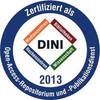PDF, English
 Restricted access: Repository staff only until 25 July 2026. Restricted access: Repository staff only until 25 July 2026.
Login+Download (13MB) | Terms of use |
Abstract
Paclitaxel is applied as a first-line chemotherapeutic agent against pancreatic ductal adenocarcinoma (PDAC) and is widely used in solid cancer treatment such as breast, ovarian, and lung cancer among others. However, acquired drug resistance presents a major clinical challenge across cancer types. Consequently, a deeper understanding of the resistance mechanisms is essential to improve patient care. Using patient derived cell lines, we previously identified multi-drug resistance protein 1 (ABCB1) as a driver of acquired paclitaxel resistance in PDAC. Extrachromosomal DNA (ecDNA) was confirmed as an important mediator of ABCB1 amplification and overexpression upon drug treatment. These circular DNAs occur with highly dynamic copy numbers, which allows resistant cancer cells to quickly adapt to changing selective pressure such as therapy. Although ecDNA formation is a stochastic process driven by genomic rearrangements, I showed that paclitaxel resistant populations can be primed for a faster ecDNA generation. In addition to the amplification of pre-existing molecules, resistant cells revealed increased capacity for ecDNA de novo generation. Using this cancer cell model, I further confirmed the ecDNA- suppressive effect of gemcitabine in paclitaxel combination treatment, which is the standard of care for PDAC. Beyond that, it might offer further translational benefit to breast cancer patients, who still receive paclitaxel monotherapy. Indeed, I found indications of ABCB1-ecDNA in paclitaxel-treated breast cancer biopsies. Furthermore, circulating tumor DNA (ctDNA) isolated from liquid biopsies of these patients revealed clear correlations between arising ABCB1 amplifications and temporary paclitaxel treatment. This workflow has proven to be a fast, robust, and inexpensive tool for long-term ABCB1 monitoring, which could easily be incorporated into the clinical routine to enable more personalized treatment decisions.
| Document type: | Dissertation |
|---|---|
| Supervisor: | Trumpp, Prof. Dr. Andreas |
| Place of Publication: | Heidelberg |
| Date of thesis defense: | 25 July 2025 |
| Date Deposited: | 01 Aug 2025 06:46 |
| Date: | 2026 |
| Faculties / Institutes: | The Faculty of Bio Sciences > Dean's Office of the Faculty of Bio Sciences Service facilities > German Cancer Research Center (DKFZ) |
| DDC-classification: | 570 Life sciences |
| Controlled Keywords: | Onkologie, Bauchspeicheldrüsenkrebs, Genomik |
| Uncontrolled Keywords: | Extrachromosomal DNA, Pancreatic Ductal Adenocarcinoma, Paclitaxel, Gemcitabine, Resistance, ABCB1, MDR1 |
| Additional Information: | Betreuer: Dr. Martin Sprick |









